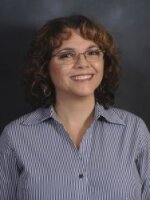The enslaved people who lived and worked at the historic Arcadia Mill was the topic of a talk this Tuesday; Feb. 24 at the Voices of Pensacola Multicultural Resource Center, downtown. The presentation is part of the University of West Florida’s Black History Month Lunch & Learn Lecture series.
Arcadia Mill was one of the first and largest water-powered industrial complexes in Northwest Florida. Located just west of Milton, it started in 1828 and operated until 1855.
Among its various operations was a quarry for ironstone, which was used to build the industrial facilities there and elsewhere.
“They also sold it, so the Pensacola Wharf was built out of Arcadia ironstone and we believe Ft. Pickens has some ironstone from Arcadia,” said Adrianne Sams, who is site manager for the Arcadia Mill Archaeological Site. Sams notes that the site’s use as a quarry was somewhat unusual in that there is not a lot of natural stone in Florida.
The industrial site started with a sawmill. Eventually, it grew to have a second sawmill and much more.
“It later had a textile mill that was run by enslaved laborers. We had a bucket and pail factory, and one of the first railroads chartered in territorial Florida. So, it was literally an industrial complex,” Sams said.
Some civil war movement came in after the industry ceased operations.
It was saved through historic preservation efforts in the 1960's. And, today it functions as a public archaeological site that is owned by the University of West Florida and is managed by UWF Historic Trust.
UWF Archaeology has conducted various research projects at the site since the late 1980's, including a large-scale public archaeological excavation in 1990 and ’91. In 2009, the focus shifted to the people of Arcadia, including the slaves who lived and worked there.
“We know from ledger books that clothes were being purchased for them, food was being provided. We know from some personal accounts that perhaps these slaves were allowed to have garden plots and chickens and sell live stock on their own time. And, even records that women were allowed to have finery,” said Sams. She says that doesn’t mean life as a slave at Arcadia was great, but it highlights different facets of the “peculiar institution of slavery’ than you typically hear about.
In addition to the ledgers, there were personal memoirs, census records and slave schedules, and numerous articles from the Pensacola Gazette. Dr. Brian Rucker from Pensacola State College is credited with amassing the multitude of records for his dissertation.
The records point to the fact that there were mostly males who were laboring in the sawmills.

“Then later when the textile mill was operating in 1845, a gentleman traveled to Virginia and purchased the 40 female slaves. The thought was that women and children had smaller hands and could manipulate the machinery better,” Sams said. “So, we know the initial textile laborers were females, but later there were men, young boys and girls. And, so you can also kind of track that maybe they’re marrying and procreating.”
With such information, researchers can track the growth of the population. Additionally, there were records of the transporting of slaves.
Part of the archaeological research focused on where the people lived on the site. Sams says their challenge was to determine whether the slaves lived close to the mill in the low-lands or in the uplands, where one of their earliest site surveys revealed a wealth of domestic materials such as ceramics, glass, bricks, and nails.

“We went back to northern uplands and honed in on a space where we identified there was a structure there, and possibly more structures based on the number of artifacts. But, it did seem to be low status. There were lower status ceramics,” said Sams, who also noted possible indicators of African American occupation. “We found pipe bowls and pipe stems, which you would think they didn’t have access to but they did…found literature suggesting they were [so-called] "Negro Pipes".”
Sams says other fascinating artifacts include an intact leather shoe heel and several naval buttons.
“A recent UWF grad Rylan Thomas, in his Master’s thesis, was able to trace these buttons and find documents showing where the Arcadia owners were able to buy Naval surplus clothing for their slaves.”
But, one of the more interesting aspects of the Arcadia story was the use of slaves for industrial work. But, people tend to think of slaves on a cotton plantation. But, Sams said the practice was fairly common in this region, where lumber and water resources were in abundance.
“In this area it’s more silviculture. The use of slave labor in an industrial context was highly controversial and I think that comes back to why we have so many newspaper records and articles; because people were upset by this idea. By putting a slave in an industrial context, which is a skilled context, that’s negating the belief that they weren’t smart enough or that they were inferior to ‘us’ and a lot of people didn’t like that.”
The Arcadia Mill Archaeological Site, which includes interpretative material for the public, has been closed for upgrades. A Grand Reopening is set for Saturday, March 14, from 10 a.m. to 2 p.m.








